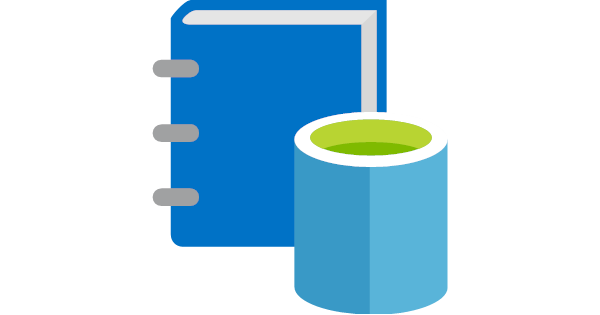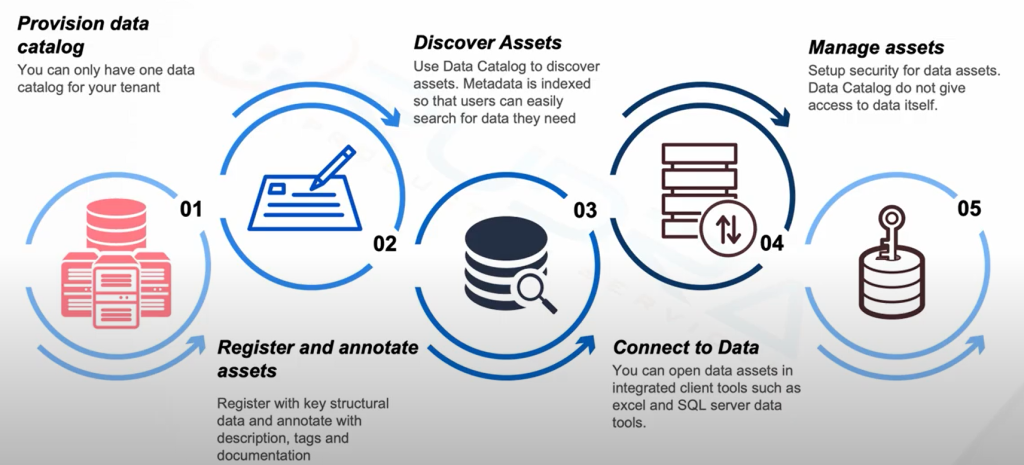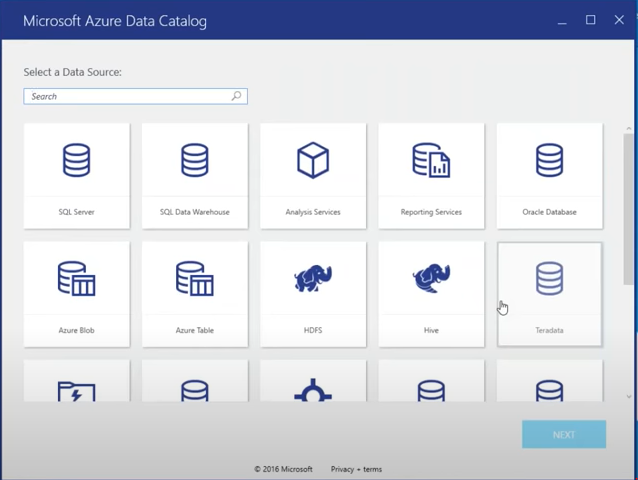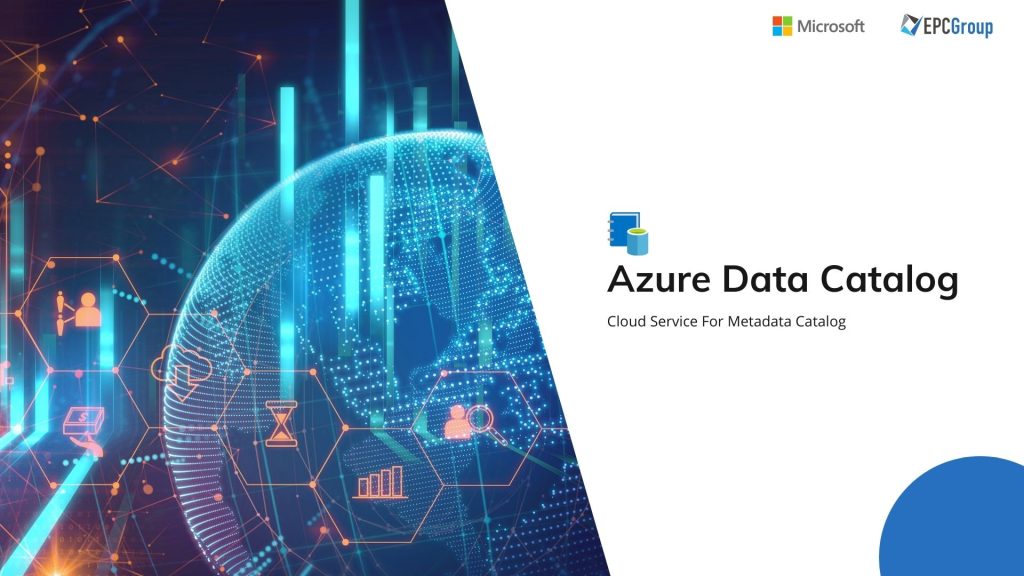The globalization of the business arena has led to a consistent increase in the use of data. In order to manage these data assets, the concept of a Data Catalog has become popular. The term ‘Data Catalog’ can be described as a collection of metadata, which when combined with data management tools, helps the user organization to manage the enterprise data sources. The Azure Data Catalog is one such service designed by Microsoft. It helps to enable the user company to make their Data available to their customers at all times. Also, apart from the other benefits of the service, the features provided under the Azure Data Catalog Pricing Structure provide another noteworthy advantage. The service provides the user with the ability to enhance the performance capacity of previous investments.
What is Azure Data Catalog: Meaning and Importance

It is a cloud service designed by Microsoft, to allow the users to discover the data sources required and consecutively analyze the data sources they find. It is a fully managed service that is built in the format of Software as a service or SaaS application. The service creates an inventory of the data that is later used to discover and understand the data sources within the user organization.
Consequently, this feature enhances the administrative capabilities of the company by aiding the process of managing the data assets. Thus, through the use of the Azure Data Catalog, the user company can discover, understand, analyze and consume data sources skillfully.
The process includes a crowdsourcing model of metadata and annotations. So, it forms a unified enterprise-wide metadata catalog, where all members of the user organization can contribute their knowledge and build a community of data.
The importance of the Data Catalog can be defined through its ability to address the data discovery challenges faced by data consumers and producers in the process of interacting with the organizational data. Along with this, the service can help companies to utilize their existing data assets to the fullest. In simple words, the data catalog aids the process of creating a self-service data asset discovery pattern within the user company. The organized data can then be easily discovered and analyzed by the data users.
The cloud service feature of the data catalog turns it into a data source registration tool. It helps data sources to be registered. While the data remains in its location, a copy of the metadata is added to the catalog along with a data source location reference. Later, this registered metadata can also be enriched.
Azure Datalog Pricing structure:
As understood earlier, the Data Catalog is an enterprise-wide metadata catalog that enables self-service data asset discovery. The service discovers, stores, describes, and indexes the data assets in order to aid the process of accessing any registered data assets. This makes the data source discovery trivial. The service is also designed to facilitate the process of collaboration and bridges the gap between the data consumers and the data producers. This makes the process of asset discovery straightforward and devoid of any inconveniences in between.
The features provided under the Azure Data Catalog Pricing Structure are provided in a two editions format. These include the Free edition and the Standard edition. While the free edition is provided for the purpose of trying out the service for free. The interested organization can sign up and enroll their users for free. On the other hand, the standard edition is provided to enable auto-scaling features of the service within the enterprise.
This can be completed by enrolling a large number of users into the service and enabling the asset level authorization and restricting the visibility as required. The standard edition price structure can be enumerated in the following way:-
| Free | Standard | |
| Price | Free | $1 per user per month |
| Max number of Users | Unlimited | Unlimited |
| Max number of Catalog Objects | 5,000 | 1,00,000 |
What is the procedure of creating an Azure Data Catalog:

The QuickStart feature helps the user organization to get started with the process of creating an Azure Data Catalog. In a situation where the user companies do not have an Azure Subscription, can create a free account before they begin. There are certain prerequisites to be fulfilled before starting the process of creating a Catalog. These include the following:-
- A subscription of Microsoft Azure
- An Azure Active Directory tenant belonging to the same user.
So, in order to set up a data catalog, the user must be the co-owner of an Azure subscription. Due to the Azure security requirements, the Azure Data Catalog has enforced Transport Layer security 1.2. TLS 1.0 and TLS 1.1 have been disabled.
The Data Catalog can be created by following the below-mentioned process:-
- Open the Azure portal and create a resource and select a data catalog.
- Provide a name for the data catalog, the subscription that is to be used, the location for the catalog and the Azure Data Catalog Pricing tier. Then click on create.
- Go to the Home page and click in Publish Data.
- Open the setting page.
- Expand the pricing and verify the edition (free or standard).
- If standard tier is chosen then the Security Groups can be expanded.
- Expand the Catalog users and select Add to add the users for the data catalog. The user is automatically added to the group.
- Expand the glossary administrators group and select add to add other users to the group where the user is already added.
- Expand the Catalog administrators group and select add to add other users to the group where the user is already added.
Lastly
- Now, Expand the portal title and add additional text which will be displayed in the portal title.
- After these steps are complete in the Settings page, navigate to the publish page.
Important sectors that use Azure Data Catalog:
The Azure Data Catalog serves several purposes for an array of users. But the two most common uses include the centralized unification of data and the purpose of business intelligence.
Registering central data sources – With the rapid growth of organizations, the data discovered and utilized by them can quickly become unmanageable. If the data is kept in inventories, it becomes difficult to manage and less accessible to everyone in the company. But, when such data is registered in the Data Catalog, companies can be restricted to find the data relevant to the business function being performed at hand.

For business intelligence/analytics – In order to develop business intelligence tools, there is a need for certain sources of data that are not even developed by analysts. Aggregation of the data sources within the Data Catalog can help analysts to slip the manual work in finding such data sources.
Best practices of features in Azure Data Catalog Pricing Structure: An Enterprise Data Assets perspective
The best practices for the features provided under the Azure Data Catalog Pricing structure can be enumerated in the following manner:-
- The user company spends less time searching for data and more time in deriving insights from it.
- The enterprise business data sources can be registered.
- Discovering data assets become easier in addition to unlocking the potential of the existing ones.
- Capturing Tribal knowledge in order to make the data more understandable.
- Covering the gap between IT and the business, while permitting every member of the organization to provide their insights.
- Allow the data to stay in the places desired and connect to the tools as required.
- Controlling the process of data assets discovery which provides data administrative capabilities.
- Integrating with the existing tools and processing the data with the REST APIs become easier.
A Comparison between Tribal knowledge vs. Azure Data Catalog

The term ‘Tribal Knowledge’ refers to the knowledge of a particular aspect that involves data assets. These include the data sources, the discovery, understanding, and consumption of the data. The process of obtaining this Tribal knowledge is quite challenging and time-consuming from the perspective of the data consumers and the data producers. These challenges are tackled by the features included in the Azure Data Catalog Pricing structure. Being a central registration system, the service manages the various data assets including the description, information for access, and the other documentation procedures required related to such data.
Thus, while Tribal knowledge is the authentic way of managing data assets, the Microsoft Data Catalog is a modern-day approach that makes the process way simpler.
Consultation: An EPC Group Approach
The EPC Group has been a pioneer in the field of helping organizations in collaborating, communicating, and sharing valuable information and data as Azure Consulting partner for Azure Data Catalog. The organization provides time-tested thorough expertise in designing training courses. It creates the foundation for the solutions and services provided by them. The company is also one of the leading training giants in the sphere of Business Intelligence/Analytics tools developed by Microsoft under the Power BI and Azure collections.
Some of the Power BI services that the group consults include Office 365, Dynamics 365. Under the Azure category, the EPC Group provides Azure consultation on Azure Data Factory, Azure Analysis Services, Azure Active Directory, Azure Cognitive Services, Azure Data Lake, Azure File Storage, and Azure Stream Analytics. Being a gold-certified partner of Microsoft, the EPC group also designs curated training programs. It aids user organizations to tackle any issues while using the features included in the Azure Data Catalog Pricing structure. The solutions and training programs aim to help organizations utilize the features of the Data Catalog. Moreover, it increases the productivity of the data discovered by them.
Conclusion:
It is designed to give a clear view of the organizational data source in a structural metadata format. The amount of time spent in the past, on understanding the data can now be used in analyzing the data. So, it implies that the service increases the organization’s ability to analyze larger quantities of data without hiring any analyst. The service is formulated in a way that keeps the user informed about the intentions behind the use of the data.
This process can further help the user company to choose the data sources according to their data requirements. In simple words, the service provides the convenience of viewing a particular data source in the specific tool of choice. All these features come together in helping the user manage the entire data estate of the organization skillfully which leads to unified data governance and subsequently increased productivity.
Fill In The Form For – FREE 30 Mins Azure Data Catalog Consulting










